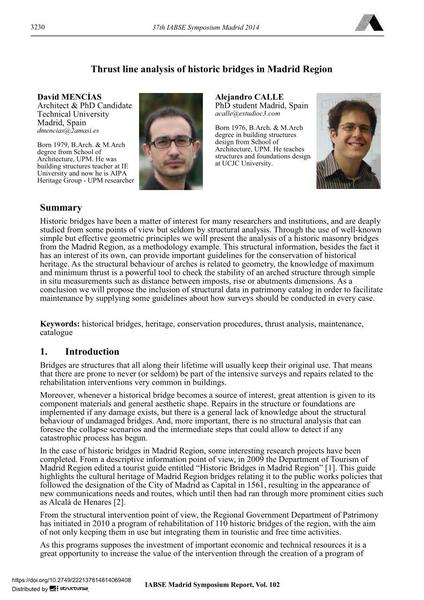Thrust line analysis of historic bridges in Madrid Region

|
|
|||||||||||
Détails bibliographiques
| Auteur(s): |
David Mencías
Alejandro Calle |
||||
|---|---|---|---|---|---|
| Médium: | papier de conférence | ||||
| Langue(s): | anglais | ||||
| Conférence: | IABSE Symposium: Engineering for Progress, Nature and People, Madrid, Spain, 3-5 September 2014 | ||||
| Publié dans: | IABSE Symposium Madrid 2014 | ||||
|
|||||
| Page(s): | 3230-3237 | ||||
| Nombre total de pages (du PDF): | 8 | ||||
| Année: | 2014 | ||||
| DOI: | 10.2749/222137814814069408 | ||||
| Abstrait: |
Historic bridges have been a matter of interest for many researchers and institutions, and are deaply studied from some points of view but seldom by structural analysis. Through the use of well-known simple but effective geometric principles we will present the analysis of a historic masonry bridges from the Madrid Region, as a methodology example. This structural information, besides the fact it has an interest of its own, can provide important guidelines for the conservation of historical heritage. As the structural behaviour of arches is related to geometry, the knowledge of maximum and minimum thrust is a powerful tool to check the stability of an arched structure through simple in situ measurements such as distance between imposts, rise or abutments dimensions. As a conclusion we will propose the inclusion of structural data in patrimony catalog in order to facilitate maintenance by supplying some guidelines about how surveys should be conducted in every case. |
||||
